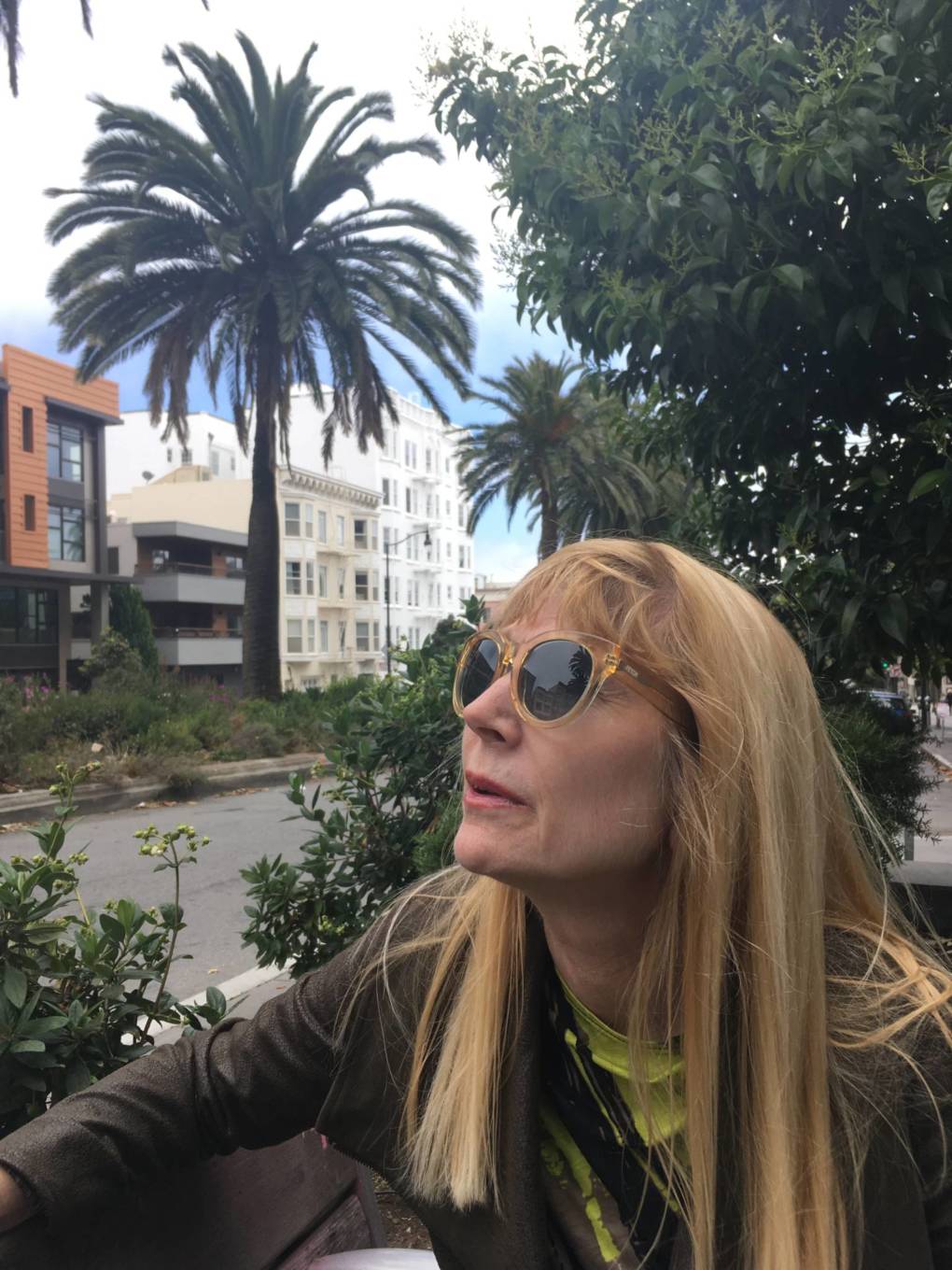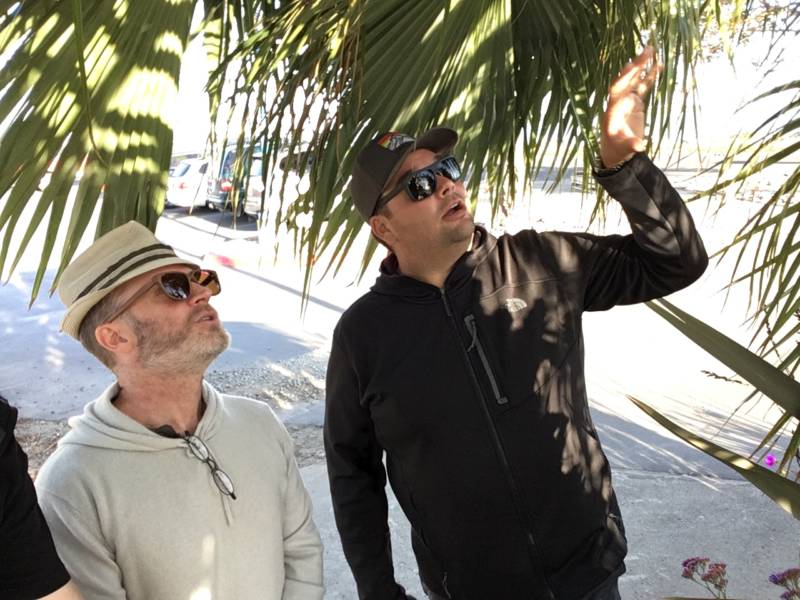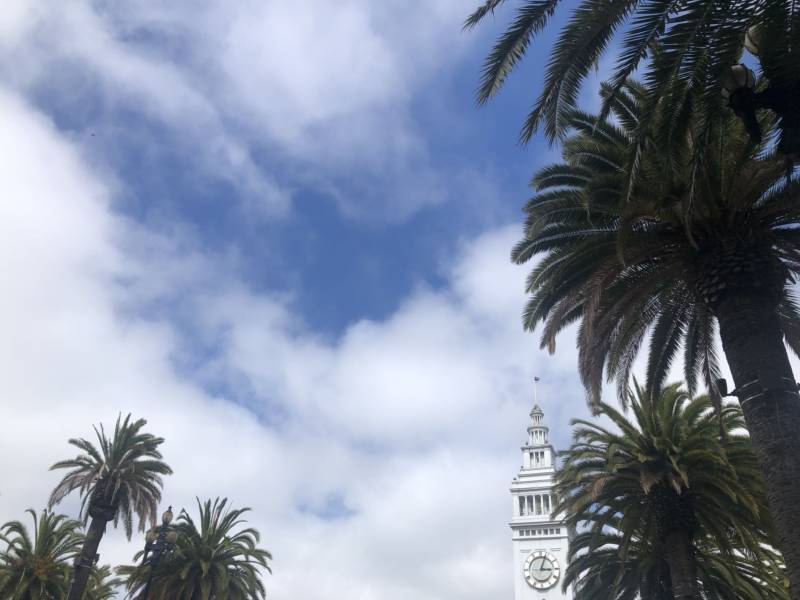A
fter Joseph Morales, an electrician from Chicago, moved to Emeryville this past winter, he found himself wondering: What’s with all the palm trees in the Bay Area? Like Joseph, they didn’t originate here. But they’re all over the place. Not that Joseph minds.

“They remind me of vacation,” he says, “having a good time with a cold drink and sitting under a palm tree.” Then again: “Northern California doesn’t really seem to be the ideal location for palm trees. I’m expecting hot weather and sun and beaches. And there’s just palm trees and mountains and cold water. So it just seemed weird.”
You can spot dozens of species of palms around here, but only one in the state is native. Washingtonia filifera, the California palm or desert fan palm, prefers the arid region hundreds of miles farther south — closer to Palm Springs — over the mist of the Bay Area.
Many of the other species you see in California have names hinting at distant origins: the Canary Island date palm. The Chinese windmill palm. The Mexican fan palm.
How’d they get here?
Foreign palms were originally brought to California’s Spanish missions in the 1700s for religious services the Sunday before Easter, says Joe McBride, a professor emeritus of landscape architecture and environmental planning at UC Berkeley.
“They used the palm fronds for processionals on Palm Sunday once a year at their churches,” he says. “There was nothing like this growing in the vicinity of the missions.”

As more settlements were built over the following decades, more palm trees were planted. And palms gained more ground in the 19th century when they became trendy in Europe as a symbol of the tropical world. The well-to-do began keeping palms in rooms or greenhouses as status markers, McBride says.
“It was a fashionable thing for the rich and famous to have … and that idea sort of spread to hotels, where they had these indoor palm gardens that were basically lavishly furnished dining rooms with potted palm trees,” he says.
By the late 1800s, that same fascination had taken hold in Los Angeles. It became part of Southern California’s style — its image and its sales pitch.
Growing palms for dates eventually factored in, as noted in a 1950s Palm Springs tourism film. Some 4,000 acres near Palm Springs were growing dates at the time, the film noted.
Palms proliferate
Over the last century, palms have turned out to be highly practical street trees in both Los Angeles and the Bay Area. Martha Ketterer, a San Francisco landscape architect, has presided over the planting of hundreds of palms — and not just because she’s fond of them.
“Palm trees are very-sexy looking creatures,” Ketterer says, but also, when it comes to streetscaping, they solve a lot of logistical challenges compared to woody trees. For example, urban survivability: Palms can often cope in salty places, like right next to the bay, or amid gusty wind, like the kind that “whips down Market Street,” she says.

Palms also have small roots that make them less likely to lift up nearby sidewalks and much easier to transplant successfully. Ketterer says installing a nice oak tree (of a size requiring a crane) might cost taxpayers around $50,000, so public officials may be reluctant to gamble on the oak’s survival when palms are a safer, more affordable bet.
You can also plant a palm right between a brick building and a power line and know that it will grow pretty much straight up, with no growing branches to snag on masonry or Muni wires.
Granted, palms have their detractors. In the aftermath of the 1989 Loma Prieta earthquake, some decried the planting of more palms in the city as a tacky wannabe-SoCal look: “It was going to be ‘the Los Angeles-ation of San Francisco,’ ” Ketterer says. And in some wet habitats, both Mexican fan palms and Canary Island date palms are considered invasive, crowding out native plants.
But palm trees also enjoy a certain cachet. To Joseph, the electrician who first asked Bay Curious about them, they signify being off work in some exotic sliver of paradise.
Jason Dewees, a San Francisco horticulturist who wrote the book “Designing With Palms,” says part of the reason many people feel that way involves a history with palm trees dating back to the dawn of agriculture.
“Some of the earliest representations of plants by the human hand are representations of palms in the deserts of North Africa,” Dewees says. From petroglyphs to ancient coins, palms are a potent symbol, connoting hospitable oases.

“They show you that you’re in a place where you can grow food and where there’s water, and where the palm tree itself is going to provide dates,” Dewees says. Palms have also long been planted simply for beauty and pleasure. They show that the land is taken care of — that you’re somewhere nice.
That answer worked for Joseph. After all, he arrived here not long ago from Chicago. It’s too cold for palm trees there.
